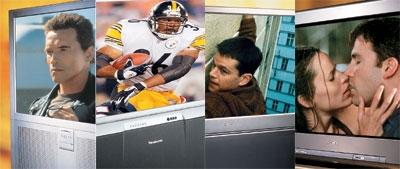Shopping Made Simple: HDTV For Less

Been to your local electronics store lately? If you have, you've probably noticed that price tags on HDTVs don't hit you with the same sticker shock that they used to. Even those sleek plasma and LCD models - once reserved for people who spend as much on a TV as a new car - have prices a lot less coronary-inducing. You'll even find that some stores are actually doing a decent job of setting up a high-definition display. And, whoa - look at that picture! HDTV is definitely out of the "early adopter" phase and ready for prime time.
Still, wandering the store aisles can get pretty intimidating. Ads for high-def TVs spew arcane terms like "HDCP," "DVI," and "720p," and new brands are popping up all the time. How much is a fair price for a certain screen size? And once you have the set, how do you get HDTV, exactly?
The good news is, untangling the HDTV web isn't rocket science, and what's available for$3,000 or less (our price limit for the HDTV listings on the following pages) will impress even rocket scientists. There are plenty of tube-based direct-view and rear-projection TVs in the $500 to $3,000 range, and a few flat-panel models, too. The bad news is . . . hey, what bad news? Get out your credit card, and let's roll!
Defining High-Def For a quick lesson on the ins and outs of HDTV - including formats and connection options - see "HDTV Basics". But right off the bat you have to know that high-definition TVs are split into two camps: those with built-in digital tuners for receiving HDTV programs, and those without. A set with a tuner can officially claim to be an HDTV (a.k.a. "integrated" HDTV), but if there's no digital tuner it's technically an HDTV monitor (a.k.a. "HD-ready"). A monitor requires an external tuner - often referred to as a "set-top box" - to receive HDTV programming, and it will add about $300 to $600 to the cost of the set.
Another important distinction: just because a TV can receive a high-definition TV signal doesn't mean it's a full-fledged HDTV. Some models are enhanced-definition TVs (EDTVs and EDTV monitors). An EDTV can accept a high-def signal but can't display it at full resolution. Images on EDTVs can still look much better than normal analog TV, but since we want to focus on high-def sets, we've eliminated EDTVs from our listings here. There are quite a few under $3,000, though.
You'll notice that most high-def sets have wide screens. That's because the standard aspect ratio for HDTV programs is 16:9, as opposed to the squarish 4:3 ratio of traditional sets. There will be plenty of analog TV to watch for years to come, so a few HDTVs, mainly direct-view sets, have 4:3 screens. But since the amount of widescreen programming will only grow, we recommend going with a widescreen model.




























































